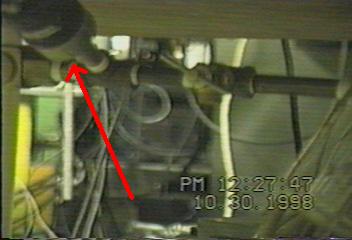Part II: Design Criteria: Problems And Solutions
The Bell Jar: An Early Prototype Diagram
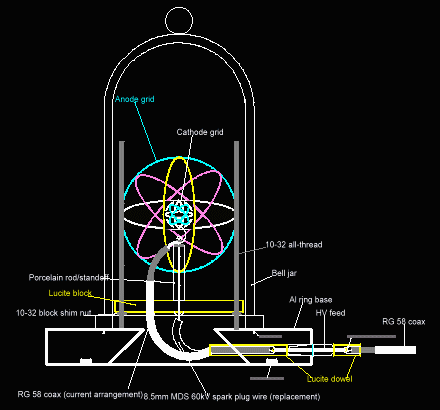
1. Vacuum
A. Real Leaks: These were major bugs to kill! There
were 3 places where a leak could occur, 1) where the
aluminum base sat on the vacuum system, 2) where the bell jar
sat on the aluminum ring, or 3) the HV feed through. About 2 weeks
were devoted to killing these bugs. Aside from noting a horizontal
asymptote in the Pressure vs. time curve, (a gross leak) the nature of
the curve itself offers clues as to whether a leak exists or not.
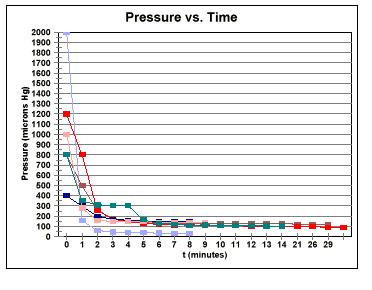
Note how the green curve stays level, then drops to a lower asymptote.
The bell jar was wiggled a bit to cause that. Note the sharp exponential
plunge of the violet curve. When that happened. The problem
was deemed solved.
The High Voltage Feed
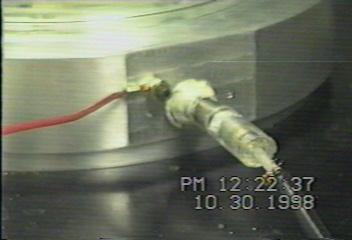
The culprit? The "engineer"!! The ape in question had cracked
the base of the High Voltage feed. Some low vapor pressure epoxy
was daubed on, and it has worked perfectly ever since.
B. Virtual Leaks, ie Outgassing: This problem was forseen with
the original, prototype teflon coax feeding the cathode. The problem
was ignored for the sake of expediency! NEVER,
EVER DO THIS!! The fear was justified. Pressure would
shoot way up to 60 microns as the coax warmed up the slightest bit.
It has since been removed. This outgassing contributed to the near
disaster with almost burning the bell jar through.
The Teflon Coax: A ++Ignorant Expedient!
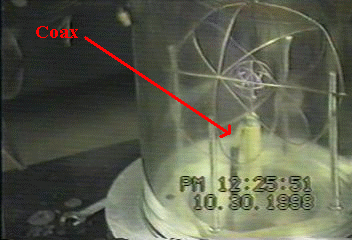
A similar embarassing incident ocurred in the presence of the esteemed
Dr. Lawrence Schooley. There was a slight flaw in the bevelling on
the inner Lucite dowel, insulating the inner HV feed. We saw some
arccing and then the HV supply $3.00 load resistor blew. The
pressure shot up as acrylic vapor flooded the system. More on this
on the next page.
C. Imaginary Leaks: Thermocouple vacuum gauge calibration.
TC gauges are notoriously fickle things. It was discovered this winter
that the gauge was reading about 25 microns high after checking the system
with a better calibrated ionization gauge.
Faulty Pressure Reading
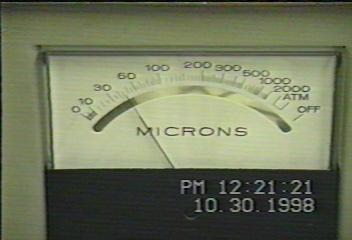
A Thermocouple
